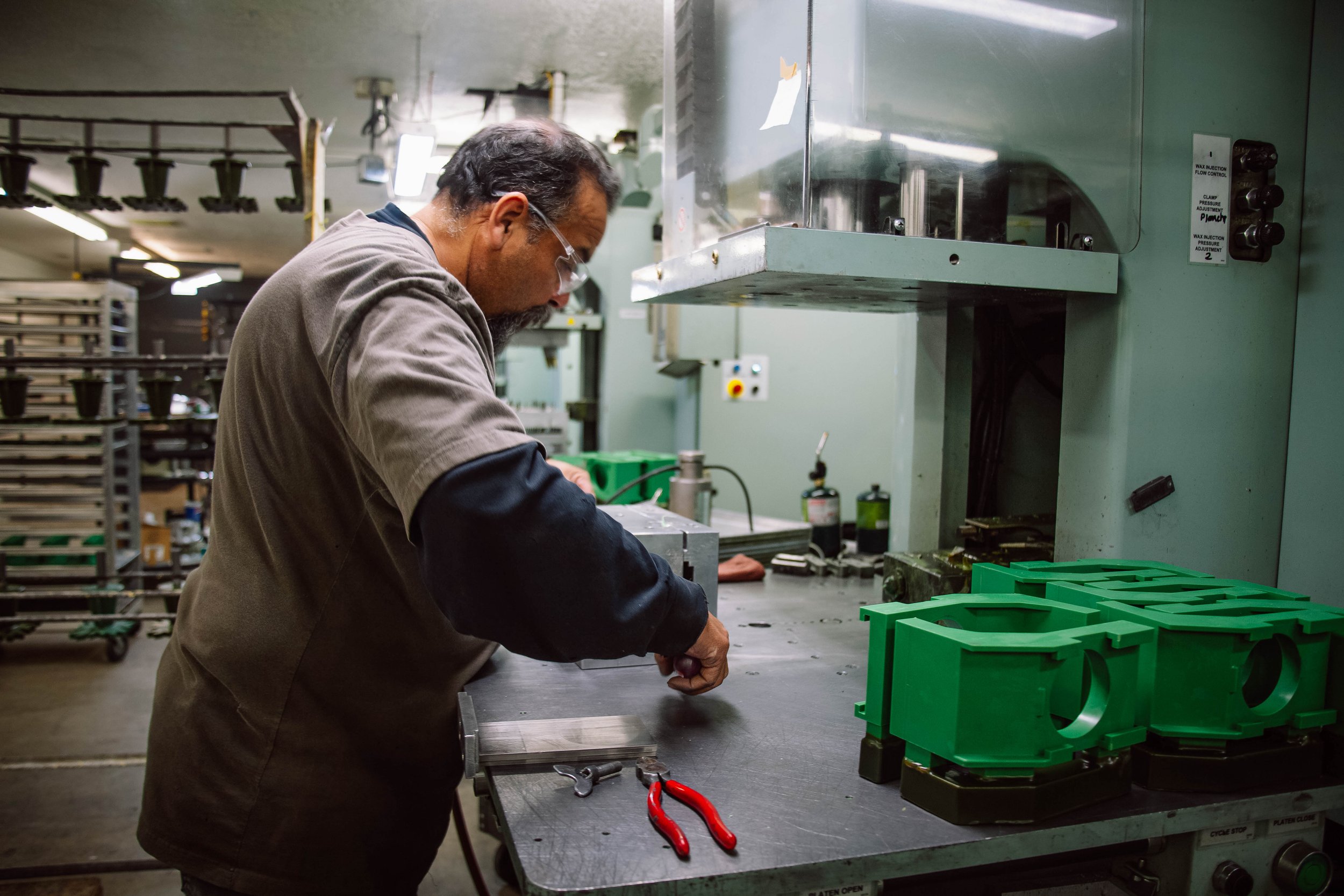Precision Casting Process FAQs: Dewaxing
We're getting closer to the finish line in our FAQ series on the Precision Casting process. In this article, we're covering a sometimes overlooked step - dewaxing. Let's get into it!
Ceramic shells and wax patterns being introduced into a flashfire burnout system
What is Dewaxing in the Casting Process?
Dewaxing (aka burnout) is the 4th major step of the precision casting process, where the wax patterns melt away from the recently formed shells from the ceramic slurry stage. Burnout leaves a hollow, perfectly shaped negative of your part for metal pouring in the subsequent steps. Typically, foundries use autoclaves, steam, or flashfire systems to dewax their projects. Dewaxing/burnout also helps solidify ceramic shells as a by-product of the wax removal.
Dewaxing is positioned as the final major step before metal is poured and provides a perfect opportunity for testing and quality control before metal pouring. After wax removal, shells are examined for cracks, incongruent walls, or other defects so they can be remedied or replaced before the rubber meets the road (*cough, metal meets the shell).
How Long Does Dewaxing Take?
Depending on the methodology used for dewaxing, it can take ~15 minutes - several hours. Many modernized foundries can process multiple shells in one go, significantly reducing a project's overall burnout time.
At IPC Foundry Group, we utilize flashfire systems for our burnout, which take ~20 minutes to complete a cycle (with a little bit of variance depending on the size of the castings).
What Happens to the Wax?
With modern equipment, a large percentage of wax can be reclaimed, repurposed, or recycled. At IPC, our flashfire systems enable us to recycle or repurpose 99% of our wax for future use. As a general rule, we reuse all that we can, and if the quality is degraded enough, we send our wax away to processing centers where it is recycled. Recycling/reusing our wax is just one of the ways we focus on sustainability in investment casting.
We know that foundries aren't the first thing that comes to mind when envisioning green manufacturing, but that doesn't stop us from doing what we can. You can learn more here.
At IPC, we’re able to recycle, repurpose, or reuse nearly 99% of our wax from our patterns.
What Happens if Wax isn't Fully Removed?
As you can imagine, leftover wax can cause irregular shapes and defects during metal pouring. It can also lead to porosity in components or shell cracks, as well as total pouring failures.
Incomplete burnout can also lead to carbon residues, affecting metal quality and chemistry during pouring.
Like any step in the casting process, foundry teams must get it right to prevent issues in manufactured components or significant delays in turnaround times.
What Happens Next?
Following burnout/dewaxing, our ceramic shells are nearly ready for metal pouring (which we'll cover next in our series of FAQs on the casting process). Before pouring, shells are inspected for quality and residual materials. After approval, they are staged for superheating before metal is poured. Superheating gets the ceramic up to an appropriate temperature to prevent thermal shock when pouring; more on that in our next blog!


